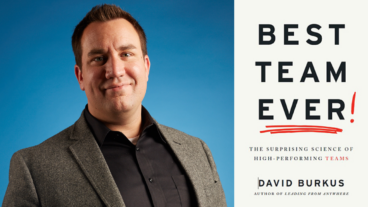The numbers aren’t encouraging. Nearly 75% of professionals find themselves in dysfunctional teams. Moreover, based on their negative team experiences, only 24% of professionals would willingly choose to work in teams if given the option.
The unfortunate reality is that most teams simply don’t work!
A primary cause for this dysfunction comes from people’s inability to understand, assess, and leverage the following five unavoidable team tensions.
- Focusing on tasks AND relationships
- Leveraging structure AND flexibility
- Communicating truthfully AND tactfully
- Promoting collaboration AND independence
- Increasing empowerment AND accountability
The Downside of Ignoring Tension
In a world that mistakenly perceives tension as inherently negative, most teams choose to either ignore or avoid them. As a result, here are three negative outcomes they will inevitably experience:
1. The Perpetual Pendulum
In this phenomenon, teams continuously swing back and forth between two extremes, driven by short-term and simplistic strategies. Initially, teams wholeheartedly embrace one side of a tension, such as empowerment, and proclaim it as the key focus (e.g., “This is the year of empowerment!”). However, as they excessively prioritize one value at the expense of the other, negative consequences inevitably emerge (e.g., “Uh-oh, people are making mistakes and working outside their areas of expertise!”).
In response to the unfavourable outcomes, teams mistakenly assume that the value they are prioritizing must be incorrect, leading them to swing to the other side for a while (e.g., “Okay, now we realize that moving forward, it’s all about accountability!”). Unfortunately, this swing is short-lived as it becomes evident that the new approach also falls short, prompting a swing back to the initial position. This perpetual back-and-forth exhausts team members, erodes their trust in leadership’s direction, and ultimately diminishes engagement.
2. The Not-So-Great Divide
Due to an inability to embrace complexity, teams find themselves trapped in the confines of a limited mindset — seeing things as strictly right or wrong, good or bad, for or against. This narrow perspective can lead to a dangerous divide among team members and result in relational polarization. It’s a tale of “You’re either with us or against us.”
Sadly, this division creates echo chambers within the team where individuals surround themselves with only like-minded colleagues who affirm their views. Staying quiet during the actual meeting, they speak freely in the inevitable “meeting after the meeting” where they reinforce their views with people on their side. In doing so, they unknowingly shut out the potential for healthy and creative tension that could arise from engaging with team members holding different perspectives. As a result, they operate with significant blind spots and limited thinking, and the level of trust and psychological safety within the team remains low.
3. The Mediocrity Trap
This is a result of the wasted energy and productivity tied to the perpetual pendulum and the lack of collaboration and synergy linked to the not-so-great divide. Meetings become mere formalities and lack the critical pushback and healthy opposition that drive meaningful dialogue. As a result, the essential ingredients for making ground-breaking decisions and taking innovative approaches are nowhere to be found.
As lazy thinking takes hold and relational cliques form, high-performing and high-potential team members begin seeking better opportunities elsewhere. Meanwhile, average performers settle into comfortable complacency. Before you know it, the team is trapped in a culture of mediocrity, trudging through each week with the sole aim of making it to Friday.
The Upside of Leaning into Tension
The great news is that some teams choose a road less travelled, and rather than ignoring or avoiding key tensions, they lean into them and learn how to leverage them. And this truly does make all the difference.
Here are three predictable outcomes that teams experience when they have the skills and courage needed to tap into the power of healthy tension:
1. From “Right” to “Best”
When teams transcend overly simplistic either/or thinking, which demands a binary right-or-wrong approach, and embrace both/and thinking, which acknowledges the validity of multiple perspectives, they develop a vibrant and dynamic culture. As a result, team members no longer squander their time and damage their relationships through endless debates over what is the “right” answer.
Instead, they channel their efforts into collaborative discussions aimed at identifying the “best” answer from a variety of solid options. Furthermore, they recognize that this option may not remain the best option in the future, thereby fostering a constant readiness for change and a receptive attitude toward innovation.
2. From Discord to Harmony
A remarkable transformation occurs when teams begin to embrace healthy tension — they realize that there’s wisdom in resistance. They start to understand that they don’t have to exchange their values and viewpoints in order to expand them. This shift leads team members to actively seek out diverse perspectives and constructive pushback from others.
Consequently, meetings become lively and open with individuals expressing their views while attentively listening to others. Ultimately, this creates a culture of openness and candour where people feel safe and trust levels soar.
3. From Surviving to Thriving
In the book, Built to Last: Successful Habits of Visionary Companies, authors Jim Collins and Jerry Porras dig into the secrets behind organizations that consistently achieve exceptional performance and influence over extended periods of time. These companies don’t just have temporary success; they routinely outperform their competitors for decades.
Collins and his team conducted an in-depth investigation to uncover the factors that set these organizations apart. They discovered that these companies were able to harness the power of healthy tension, using what Collins refers to as the Genius of the AND:
Instead of being oppressed by the “Tyranny of the OR,” highly visionary companies liberate themselves with the “Genius of the AND” — the ability to embrace both extremes of a number of dimensions at the same time. Instead of choosing between A OR B, they figure out a way to have both A AND B.
Teams and organizations that choose to leverage these five tensions, as opposed to ignoring or avoiding them, will tap into a true competitive advantage and move from surviving to thriving.
You spend most of your waking hours Monday to Friday working within a team. Make sure those are hours you look forward to each week. Life is simply too short to settle for working in a dysfunctional team!
Tim Arnold has spent over two decades helping leaders better manage complexity, increase resilience, and deliver results. Having run both a for-profit and non-profit business, he leverages his real-world experience to help organizations pursue both profit and purpose. Past clients have included the United Nations, Compassion International, Royal Bank of Canada, Allstate Insurance, Toyota, and Siemens.
Contact us to learn more about Tim and how he can help your organization foster next-level teamwork.




